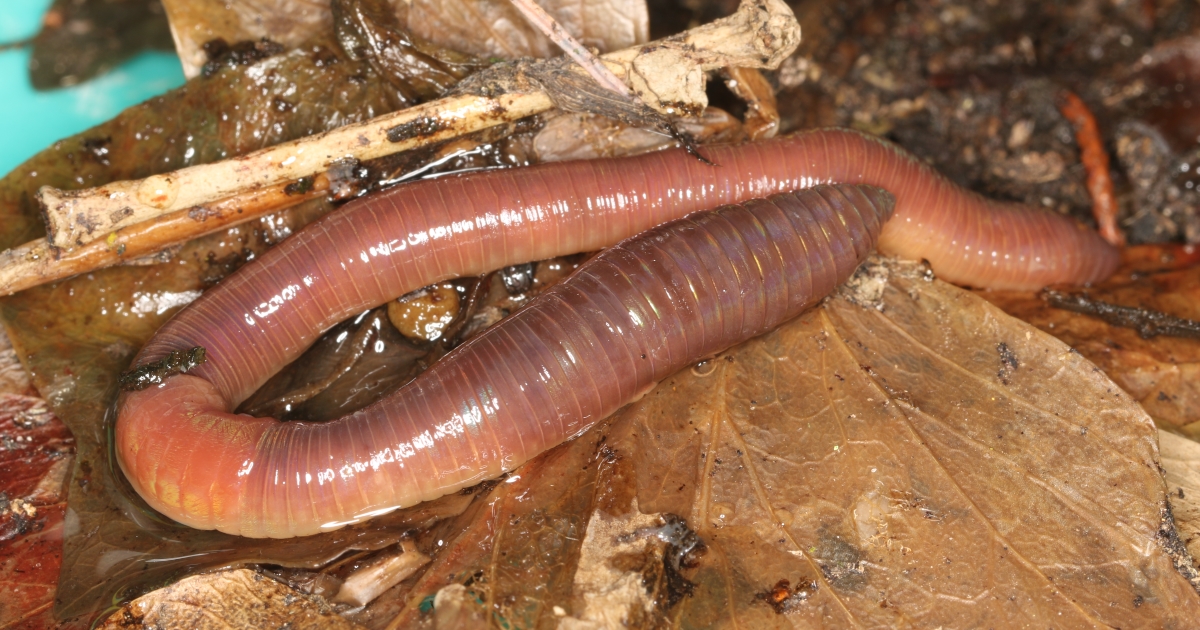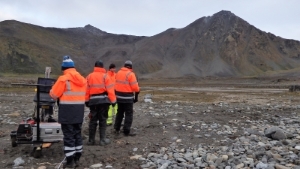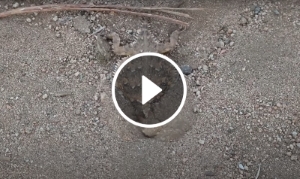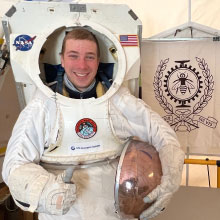Blogue
An earthworm robot… for the Moon!


With its robot inspired by earthworms and snakes, a team at Polytechnique Montréal and the University of Manitoba (Mahdi Alaei, PhD student and Professor Nan Wu) is planning to provide space agencies and commercial planetary exploration companies with a tool to scan the Moon/Martian soil in order to consider preparing for infrastructure. (Photo : Lumbricus terrestris Linnaeus par Donal Hobern, CC BY 2.0)
For now, the idea is a mere concept, but within a few years, a robot developed at Polytechnique Montréal could well burrow it's way into lunar ground. At least, this is the goal of Professor Pooney Maghoul, and her colleagues at the University of Manitoba, who will be testing a first prototype over the next year.
The earliest human footprint on the Moon will soon see its 50th birthday - figuratively speaking - but that imprint will soon have company. NASA's Artemis program hopes to enable a new generation of humans to walk on the Moon, and maybe to even live there.
Before getting to that point though, identifying an optimal place to be host to the first human settlement is a must. Whatever site is chosen must offer temperate climatic conditions, but also (and above all), have a source of water.
Several craters located at the Moon's poles do in fact meet these criteria. They could be hiding no less than 600 million tonnes of water, in the form of ice – enough to fill 240,000 Olympic-sized pools.
However, there are some questions that must be considered about this plan, before any kind of settlement project can be started.
The vast majority of exploration tools used by space agencies today only scan the Moon remotely. Almost nothing is known of what is hidden beneath the planet's surface. Is the soil porous or rock-hard? What proportion of ice and minerals does it contain? What is the soil thickness above the source rock? And finally, what load capacity would this type of soil offer, if we wanted to build a structure large enough to accommodate humans?
The answers to these questions could well come from a Polytechnique Montréal-designed robot. It's a robot inspired by the locomotion of burrowing animals such as earthworms, snakes and horned lizards - all of whom are capable of loosening the ground to bury themselves, and that movement in turn can be used to analyse that soil's properties.
An oscillating robot
 Associate Professor Pooneh Maghoul (Photo : Caroline Perron) Associate Professor Pooneh Maghoul (Photo : Caroline Perron) |
Associate Professor Pooneh Maghoul from Polytechnique Montréal’s Department of Civil, Geological and Mining Engineering is leading this project, which also involves researchers from the University of Manitoba. In a few months, the group hopes to test a bioinspired robot that mimics creatures that can dig into the ground using movements that are cycles of contraction and stretching, or by the simple oscillation of their bodies.
"The coring systems we use on Earth are far too big to be put in a rocket and sent to the Moon," explains Professor Maghoul. "Every kilogram costs about 1 million dollars to move, so you need to develop compact, lightweight technologies to analyze the soil there."
To achieve this, the group plans to build a shell-like robot weighing no more than 5 kilograms and measuring 30 to 50 centimetres long, including its batteries. It will be equipped with cameras, pressure sensors, and devices that will permit it to identify the nature of minerals and molecules in the soil. Its head, similar to that of an earthworm or a snake, will act as a probe by burying itself deep in the ground. Its tail will contain batteries. And between these two sections? That’s where the magic happens!
At this point, four devices that contract, stretch and vibrate laterally under the influence of an electric current will animate the object. These are "piezoelectric transducers", a sort of motor that transforms an electrical signal into mechanical energy, using materials that change shape under the power of a current.
In nature, some snakes oscillate frantically to bury themselves in the sand. "What they're doing is they're making the ground fluid. The larger particles are broken down into smaller pieces, which reduces soil strength,” Maghoul says.

The robot's four piezoelectric motors will permit it to vibrate longitudinally to reproduce the movements of the earthworm, and move laterally, as some snakes do. (Crédit : Mahdi Alaei, Pre Pooneh Maghoul et Dr Nan Wu)
The robot in question will use the same impressive trick - even if it encounters very dense, granular soil. The robot will vibrate at high frequencies, close to ultrasound-wave territory. Moreover, it will adapt its vibration frequency to the type of soil encountered, in order to maximize penetration efficiency into the soil.
"By activating these devices simultaneously or sequentially, we should be able to create various forms of vibration," notes Professor Maghoul. By synchronizing the vibration of its four motors, the robot will vibrate from front to back like a jackhammer. Staggering the vibrations will create lateral oscillations reminiscent of those used by snakes to loosen the sand around them in order to bury themselves.
The group hopes to provide space agencies and commercial lunar exploration companies with a robot capable of digging to a depth of 1-1.5 metres. "Even just that would already be a great success because we know almost nothing about the moon at this ground depth, and especially not at high resolution," confides Professor Maghoul.
From the moon to remote areas
 Professor Maghoul and her doctoral students are also assessing how seismic readings recorded by sensors distributed at various locations on the surface of an area will provide information about the nature of the ground. They recently tested their method using data obtained by a Polish research group from the National Science Center during an expedition to the Svalbard archipelago (Norway). (Photo : Wojtek Gajek, Institute of Geophysics, Polish Academy of Sciences) Professor Maghoul and her doctoral students are also assessing how seismic readings recorded by sensors distributed at various locations on the surface of an area will provide information about the nature of the ground. They recently tested their method using data obtained by a Polish research group from the National Science Center during an expedition to the Svalbard archipelago (Norway). (Photo : Wojtek Gajek, Institute of Geophysics, Polish Academy of Sciences) |
If Professor Maghoul and her collaborators' project is heading to the Moon - literally - it could also have applications here on Earth, particularly in the Canadian North and in mining tailings ponds.
In the Canadian far north, the permafrost has started to melt, whereas it was previously thought that it would remain permanently frozen - forever. It's impossible to know with certainty how much existing housing and infrastructure will be affected by these stunning changes. It's also impossible to plan new buildings without a thorough soil analysis to assess the load that ground will be able to bear in 10, 20, or 50 years.
Also just like the Moon, in the far north, not needing to move heavy, bulky coring equipment to analyze the soil is important, so compact solutions such as robots are welcome.
Until then, Professor Maghoul is contributing to the development of another minimally invasive soil analysis technology, which she told us all about last fall in this blog post from Lab2500 and in this article from Poly Magazine.
Learn more
Professor Pooneh Maghoul expertise
Civil, Geological and Mining Engineering Department website






Comments
Commenter
* champs obligatoire